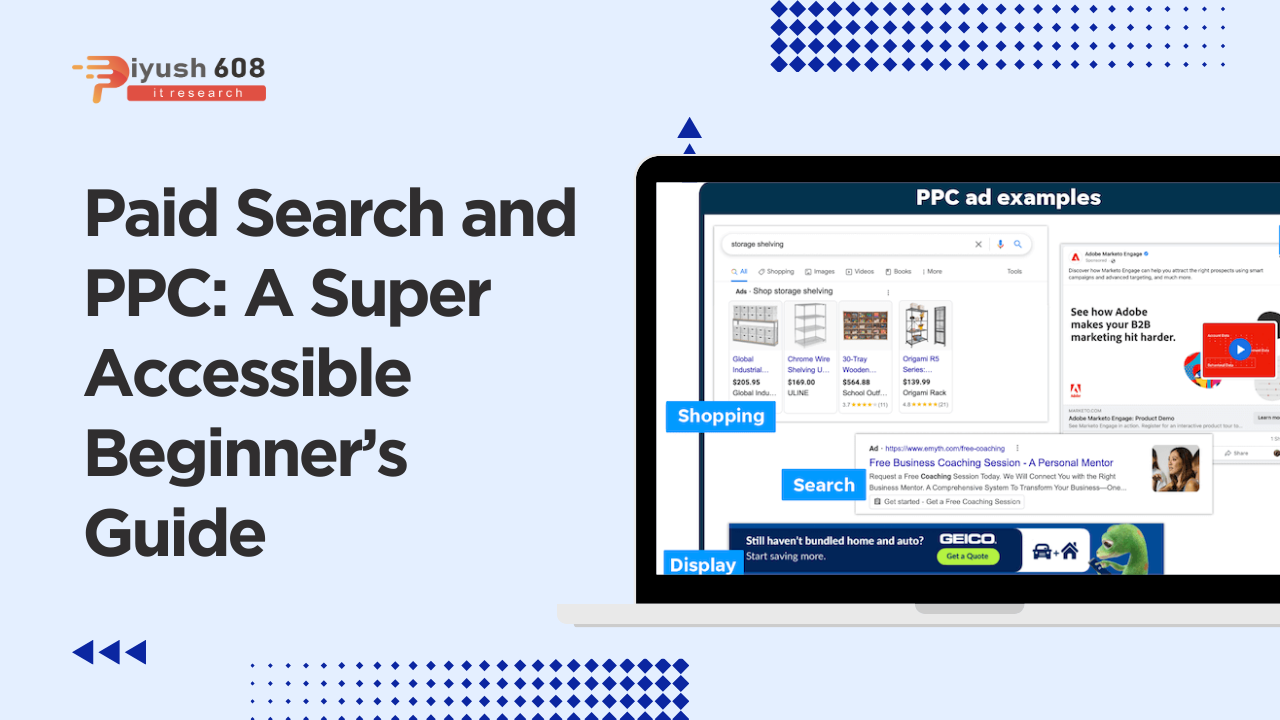
Paid Search and Pay-Per-Click (PPC): A Super Accessible Beginner’s Guide
Paid Search and Pay-Per-Click (PPC) advertising are essential components of digital marketing. They allow businesses to reach potential customers through search engines like Google and Bing, paying only when someone clicks on their ads. This beginner’s guide will break down the basics of paid search and PPC to help you get started.
1. Understanding Paid Search and PPC:
Paid Search: This refers to advertising on search engines, where you pay to have your ads displayed at the top or bottom of search engine results pages (SERPs) when users search for specific keywords or phrases.
PPC (Pay-Per-Click): PPC is a pricing model used in paid search advertising. You only pay when someone clicks on your ad, not when it’s displayed. It’s a cost-effective way to ensure you’re paying for actual user engagement.
2. Key Components of PPC Advertising:
Keywords: You choose relevant keywords or phrases that trigger your ads to appear when users search for those terms. Conduct keyword research to find the most effective keywords for your business.
Ad Copy: Create compelling ad copy that encourages users to click on your ad. It should be relevant to the keywords and offer a clear call to action.
Landing Page: When users click on your ad, they should be directed to a landing page on your website that is relevant to the ad’s content. Ensure the landing page provides a good user experience and encourages conversions.
Bid Strategy: Set a maximum bid for each keyword or phrase. This is the most you’re willing to pay for a click on that keyword. Bid strategies can vary, including manual bidding or automated bidding options provided by the advertising platform.
Quality Score: Search engines assign a Quality Score to your ads based on their relevance and user experience. Higher-quality ads often pay less per click and receive better ad placements.
3. Platforms for PPC Advertising:
The most popular PPC advertising platform is Google Ads, but other platforms like Microsoft Advertising (formerly Bing Ads) and social media platforms like Facebook, Twitter, and LinkedIn also offer PPC advertising options.
4. Creating Your First PPC Campaign:
a. Define Your Goals: Determine your campaign objectives, whether it’s driving website traffic, generating leads, or increasing sales.
b. Keyword Research: Research and select relevant keywords that align with your goals.
c. Create Ad Groups: Group related keywords together to create targeted ad groups. Each ad group should have specific ad copy and a relevant landing page.
d. Write Compelling Ads: Craft attention-grabbing ad copy that includes the chosen keywords and a compelling call to action.
e. Set Budgets: Decide on your daily or monthly budget for each campaign.
f. Monitor and Optimize: Regularly check the performance of your ads, adjust bids, test different ad variations, and refine your campaigns to improve results.
5. Tracking and Analytics:
Use tracking tools like Google Analytics to monitor the performance of your PPC campaigns. Track metrics such as click-through rate (CTR), conversion rate, cost per click (CPC), and return on investment (ROI).
6. A/B Testing:
Experiment with different ad variations to see which ones perform best. Test headlines, ad copy, images, and landing page elements to optimize your campaigns.
7. Ongoing Management:
PPC advertising requires ongoing attention and optimization. Keep refining your campaigns to ensure you’re getting the best results for your budget.
8. Avoid Common Mistakes:
Common PPC mistakes include not using negative keywords, ignoring Quality Score, neglecting mobile optimization, and not understanding your target audience. Avoid these pitfalls by staying informed and continuously learning.
Remember that PPC advertising can be highly effective when done correctly, but it can also be costly if mismanaged. It’s essential to start small, learn, and gradually scale your campaigns as you gain experience. With time and effort, you can leverage paid search and PPC to grow your online presence and achieve your marketing goals.


 +91 7905834592
+91 7905834592
 Enquiry Now
Enquiry Now
 piyushmnm@gmail.com
piyushmnm@gmail.com
 piyush.gupta384
piyush.gupta384
Reviews
There are no reviews yet. Be the first one to write one.